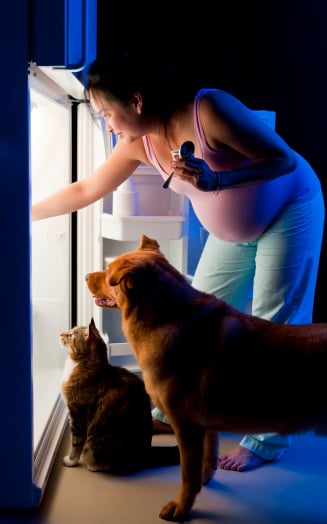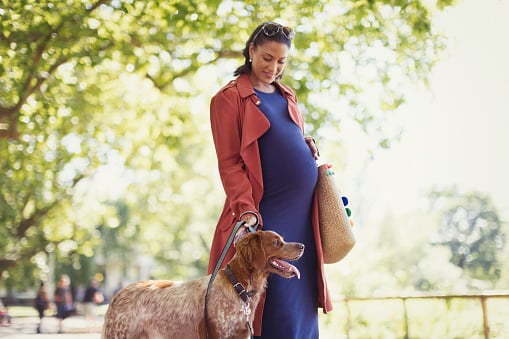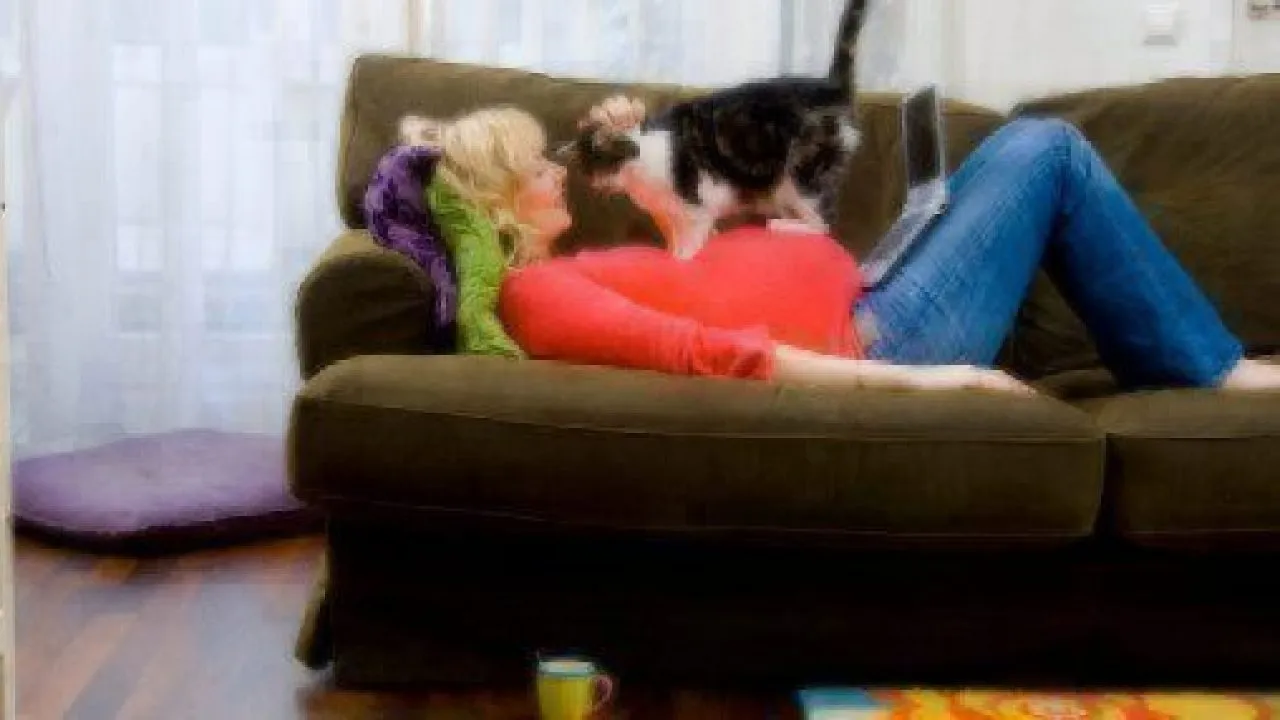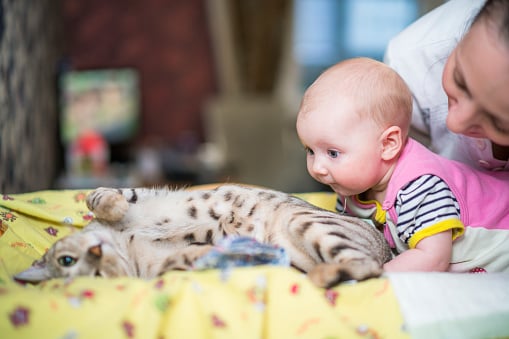Key Takeaways
- The pending birth of a child is exciting and you’ll want to make sure everything goes smoothly if you have pets in the house. You should maintain normal interaction with your pets but take a couple of adjustments and precautions.
- A few months before the baby is born, gradually start acclimating your pet to the sounds and smells of a baby.
- Once the baby arrives, plan a controlled introduction, starting with keeping your pet on a leash or in a crate and allow them to sniff the baby from a safe distance.
There comes a time in many pet owners’ lives when the need to combine human baby with fur baby arises. For some families, introducing a child into their pet-filled home is a very natural and easy transition, while others may find the abrupt change more difficult.
This difficulty may be due to a shift in pet personality upon baby’s arrival, baby and pet not getting along, or may simply be the struggle of dedicating enough time toward your newest addition without neglecting your beloved cat or dog. We’re here to help make this transition more seamless — and to keep you and baby happy and healthy — with the following advice.
While You’re Pregnant
 Upon hearing the joyful news that you’re pregnant, it’s only natural to think about what that means for your relationship with your cat or dog. In general, it’s OK for you to maintain normal interaction with your floof, but a couple adjustments and precautions are necessary.
Upon hearing the joyful news that you’re pregnant, it’s only natural to think about what that means for your relationship with your cat or dog. In general, it’s OK for you to maintain normal interaction with your floof, but a couple adjustments and precautions are necessary.
- No More Jumping: If you’re the proud owner of an overzealous pup, you’ll need to be much more proactive about the “no jumping” rule. While cute to some extent, habits like jumping, biting, scratching, and leaping need to be curbed. Many expectant parents hire trainers and animal behaviorists, enroll in neighborhood pet training classes, and even do loads of research and implementation on their own.
- Annual Checkups and Vaccines Updates: According to the Centers for Disease Control (CDC), “Pregnant women are at a higher risk for certain animal-related diseases,” as are children under five years old (including babies). Take each of your pets to the vet to make sure they’re completely up to date on all vaccines, and to ensure they’re disease-free (also, it’s extremely important for pregnant women to not handle stray animals, or animals whose health history is unknown). Additionally, about a week before the baby’s arrival, give your pet a grooming session that includes nail clipping, ear cleaning, and tooth brushing. Grooming reduces dander and cast-off fur, which newborns can be sensitive to, and clipping sharp claws reduces any accidental injuries.

- Prepare Your Pet: A few months before the baby is born, gradually start acclimating your pet to the sounds and smells of a baby. You can play tapes or videos with baby sounds, and apply baby lotion to your hands when you interact with your cat or dog. Make sure these new elements are introduced with positive moments such as play and treats.
- Prepare Your Home: Baby-proofing your home doesn’t just mean covering sharp corners and getting all potential no-no’s out of reach. You also want to make sure your home is free of pet fur and dander since there’s always the possibility that your baby could have an allergic reaction to your pet. Plus, it’ll just feel better to have a clean home to bring your baby into. (Interestingly, there’s a correlation between growing up around pets and not having allergies to them, so there’s some positive news for you!)
Once Baby Arrives
Taking the aforementioned steps will truly help make the adjustment an easier one for you, your partner, and your pet. Once baby finally arrives, we recommend following the below suggestions to your best ability:
- Introduce Pet to Baby’s Scent: Start slowly by introducing one of baby’s items to your cat or dog so they become familiar with this strange new scent! Do this as soon as possible before you actually bring your baby home from the hospital.
- Create a Controlled Introduction Environment: This is it — that pivotal moment you’ve been waiting for! Make sure you’ve created a highly controlled environment and that you’re feeling 100% up to the occasion. Your pet should be on a leash or in a crate and allowed to sniff the baby from a safe distance. Use your intuition here, allowing your cat or dog to observe and try to figure out this new creature. Moving forward, all interactions between pet and baby should be purposeful and under your careful eye. There will come a time when you may feel like you can ease up on these interactions, so follow your instincts.
- Create and Enforce Boundaries: Remember all that training you did with your pet before? Keep it up! Only allow your pet into certain rooms, make sure they’re not engaging in bad habits, and always put safety and happiness first. If you run into problems, it is always best to call in a pro.
- Be Aware of Your Energy: This is true during both your pregnancy and after giving birth. Our pets tend to be quite sensitive to emotions and will likely mirror what you’re feeling. If you’re feeling stressed and anxious, be aware that your pet may very well pick up on that. Though it’s easier said than done, do your best to channel positive emotions during this incredibly joyful, but often stressful, time of your life.
You’ve got enough to worry about with a new baby on the way. Lighten the stress load with Healthy Paws Pet Insurance to ensure you aren’t in a financial bind if your sweet fur ball needs unforeseen medical attention. Get a free quote here.








